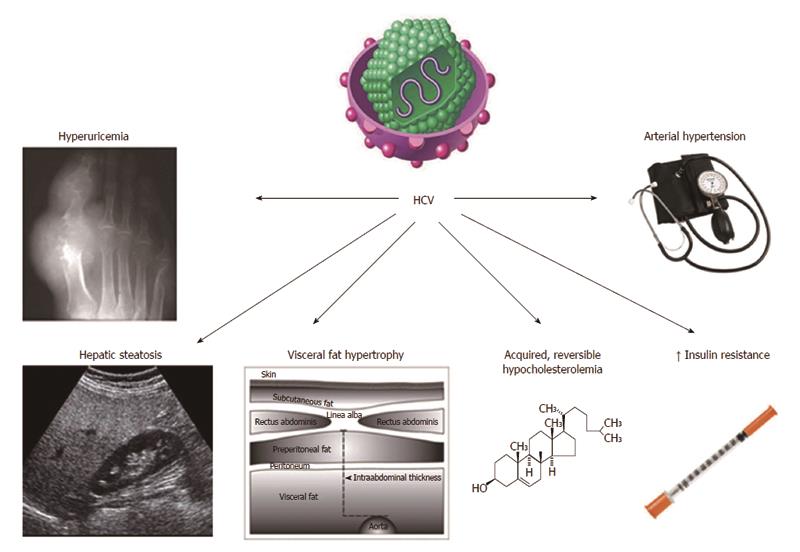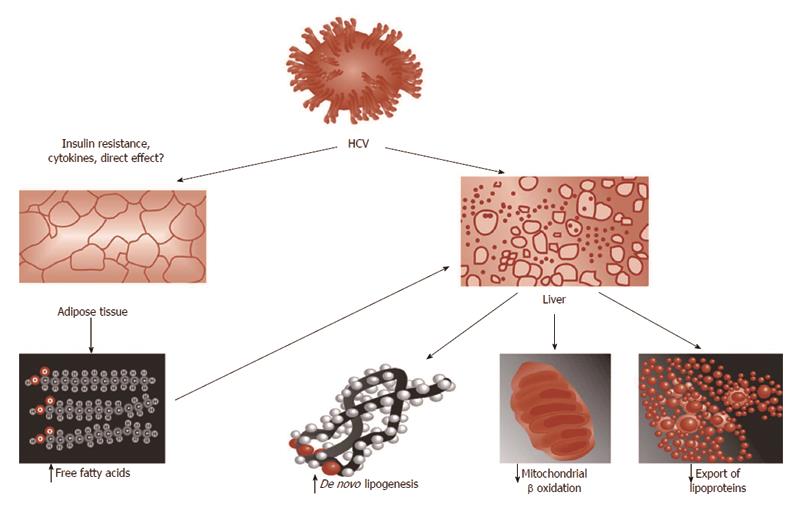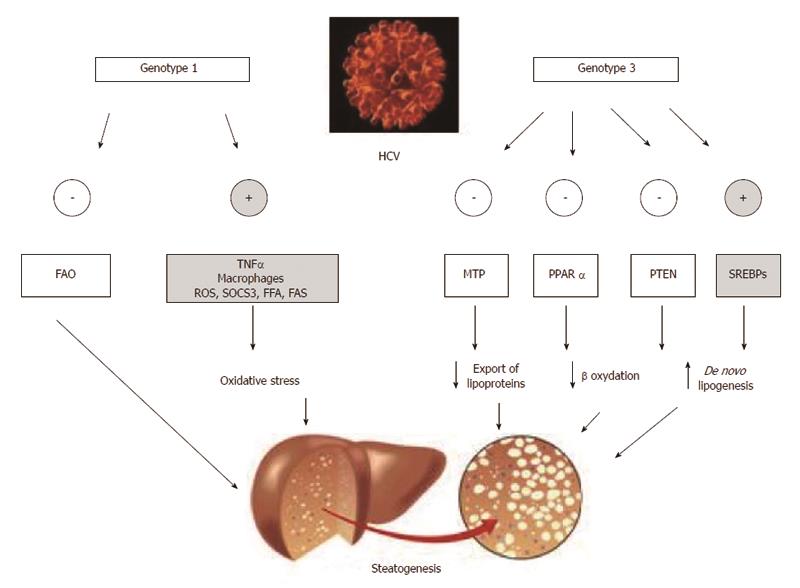Copyright
©2014 Baishideng Publishing Group Inc.
World J Gastroenterol. Jun 21, 2014; 20(23): 7089-7103
Published online Jun 21, 2014. doi: 10.3748/wjg.v20.i23.7089
Published online Jun 21, 2014. doi: 10.3748/wjg.v20.i23.7089
Figure 1 The hepatitis C virus-associated dysmetabolic syndrome (modified from ref[10]).
HCV: Hepatitis C virus.
Figure 2 General steatogenic pathways associated with hepatitis C virus infection (reprinted from ref[9]).
HCV: Hepatitis C virus.
Figure 3 Genotype-specific steatogenic pathways associated with hepatitis C virus infection[63-69].
The negative sign (-) indicates inhibited and the positive sign (+) indicates stimulated pathway. FAO: Fatty acid oxidase; FAS: Fatty acid synthase; FFA: Free fatty acids; MTP: Microsomal triglyceride transfer protein; PPAR-alpha: Peroxisome proliferator-activated receptor alpha; PTEN: Phosphatase and tensin homologue; ROS: Reactive oxygen species; SOCS3: Suppressor of cytokine signaling; SREBPs: Sterol regulatory element-binding proteins; TNF alpha: Tumor necrosis factor alpha; HCV: Hepatitis C virus.
- Citation: Lonardo A, Adinolfi LE, Restivo L, Ballestri S, Romagnoli D, Baldelli E, Nascimbeni F, Loria P. Pathogenesis and significance of hepatitis C virus steatosis: An update on survival strategy of a successful pathogen. World J Gastroenterol 2014; 20(23): 7089-7103
- URL: https://www.wjgnet.com/1007-9327/full/v20/i23/7089.htm
- DOI: https://dx.doi.org/10.3748/wjg.v20.i23.7089











